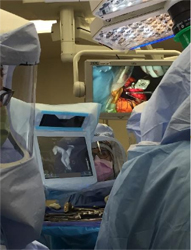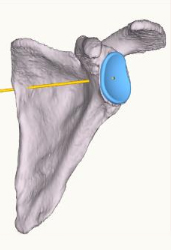The Shoulder Replacement
A total shoulder arthroplasty (TSA) is a surgery to replace the damaged parts of the “ball and socket” shoulder joint with an artificial prosthesis. The damage to the shoulder can be the result of a number of causes including degenerative joint diseases like arthritis or a traumatic fall:
Causes
Arthritis
-
 Osteoarthritis: this is an age-related form of arthritis, typically occurring in those over 50 years of age. The cartilage between the bones of the shoulder wears away, causing the bones to rub against one another resulting in shoulder pain and stiffness.
Osteoarthritis: this is an age-related form of arthritis, typically occurring in those over 50 years of age. The cartilage between the bones of the shoulder wears away, causing the bones to rub against one another resulting in shoulder pain and stiffness.
-
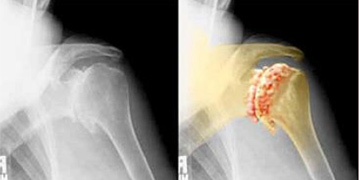 Rheumatoid Arthritis: Inflammatory arthritis where the membrane surrounding the shoulder joint is chronically inflamed, causing damage to the cartilage.
Rheumatoid Arthritis: Inflammatory arthritis where the membrane surrounding the shoulder joint is chronically inflamed, causing damage to the cartilage.
- Post-traumatic Arthritis: Can occur after a serious injury to the shoulder joint. A traumatic event may cause a tear or damage to the cartilage that worsens over time to result in limited shoulder function and joint pain.
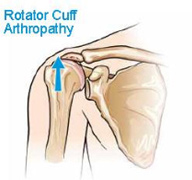
Rotator Cuff Arthropathy: May occur following a chronic rotator cuff tear. The changes to the joint from the rotator cuff tear can build up and result in arthritis and destruction of the joint cartilage.
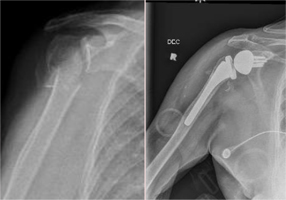
Fractures: A fracture of the humerus bone (the ball of the ball and socket) may be so severe that it cannot be pieced back together. Additionally, the blood supply to the bone pieces may be compromised. A shoulder replacement surgery may be the only option for fractures of this severity.
Treatment
TSA: Anatomic Total Shoulder Arthroplasty
This shoulder replacement mirrors the anatomy of the shoulder joint, replacing the top of the humerus bone with a metal ball and stem and the glenoid surface with a plastic socket. The orientation of the humeral head can be adjusted by the surgeon with a plate positioned underneath the metal ball implant.
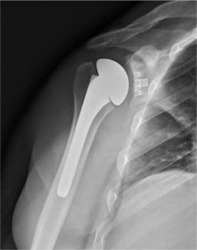
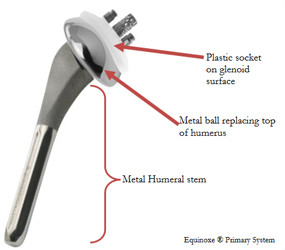
The augment, or angle and shape, of the plastic socket can also vary to correct for different types of wear on the glenoid surface.
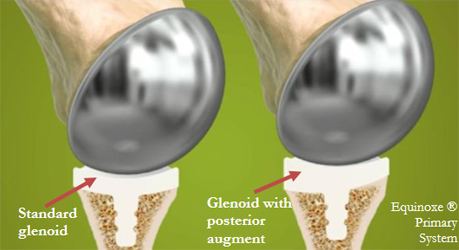
Patients with osteoarthritis and those with intact rotator cuff tendons are typically recommended an anatomic TSA.
Other options: Exactech Equinoxe Stemless Shoulder Recent developments have approved the use of a stemless humeral head in anatomic TSAs. The porous bone cage will support the structure, instead of the usual long stem. This could be a bone-conserving option for some patients.
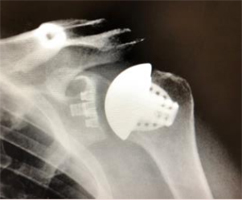
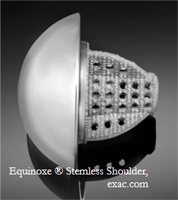
Treatment
RTSA: Reverse Total Shoulder Arthroplasty
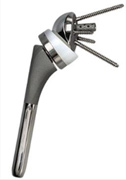
Equinoxe ® Reverse System
A reverse prosthesis is a newer technology that utilizes a “non-anatomic” shoulder replacement in patients who have shoulder arthritis and are without normal rotator cuff muscles and tendons. This means the “ball and socket” are reversed where the ball, or glenosphere, is fixed on the scapula and the socket, is placed on the top of the humerus.
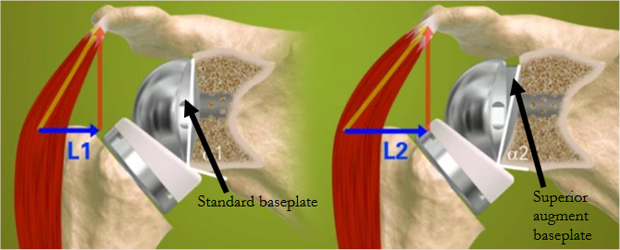
Equinoxe ® Reverse System
GPS Navigated Surgeries
A shoulder CT scan can be analyzed with software to produce an accurate 3D model of a patient’s scapula. Dr. Eichinger uses this breakthrough technology from the Equinoxe ® system to plan cases before the surgery, choosing the most appropriate size and orientation of the glenoid implant. The plan is saved and then pulled up during surgery; a tracking system is used to ensure the implants are installed as planned.
